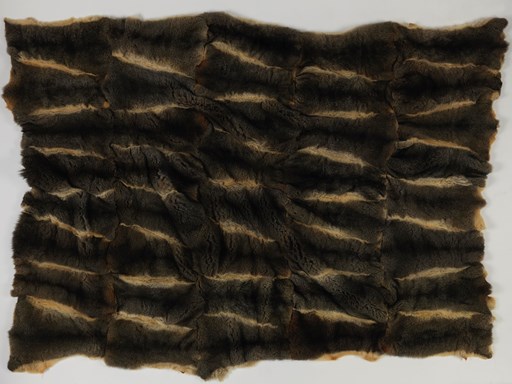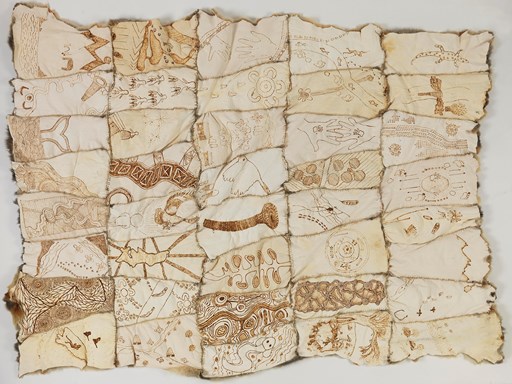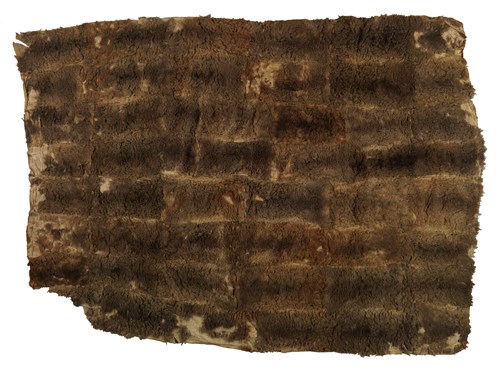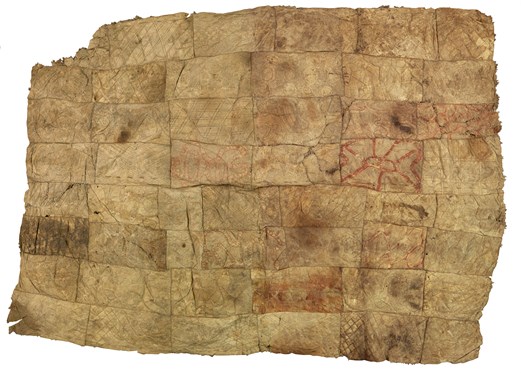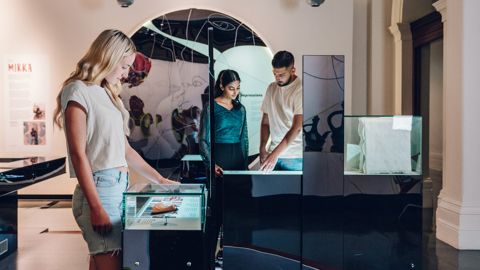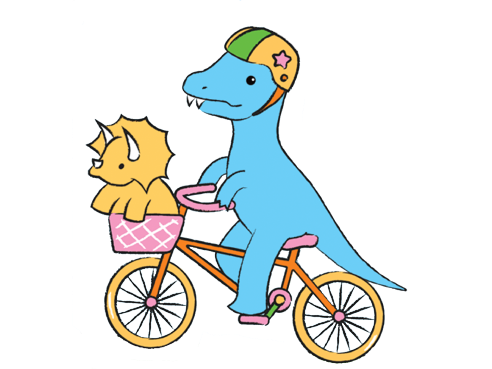Possum skin cloaks
For tens of thousands of years, possum skin cloaks have been made and worn by First Peoples of south-eastern Australia.
The cloaks kept communities warm in the winter months and cool in the summer, families would sleep with them and in ceremony women could stretch them over their laps and use them as a drum. Possum skin cloaks were made for babies and as they grew, pelts would be added to the cloak, growing with its owner. The cloaks would hold intricate designs that were markers of identity to the owner and clan. They were maps of country and held iconography that spoke to stories passed down for generations and important cultural sites, kin and family connections.
Today, possum skin cloak making continues with the revival of this practice being led by Victorian First Peoples communities. These contemporary cloaks maintain the cultural practices, connections and stories of the Ancestors and embody the strong living First Peoples cultures of today.
Museums Victoria currently holds two historical possum skin cloaks in its collection from the Yorta Yorta peoples (1853) and from the Gunditjmara peoples (1872).
The First Peoples department at Melbourne Museum continue to build the collection of contemporary cloaks and work in collaboration with the Koorie community of Victoria to share this cultural practice and history.
To learn more, watch the video below or read the full story in The timeless and living art of possum skin cloaks.

